
Are you gearing up for the Cubiks Logiks General Intermediate Test and feeling the pressure? Whether you’re a job seeker aiming to impress potential employers or a professional looking to sharpen your skills, acing this test can significantly boost your career prospects. The Cubiks Logiks General Intermediate Test is a popular psychometric assessment designed to evaluate a range of cognitive abilities, including numerical, verbal, and abstract reasoning.
This simulation consists of 20 questions, with a time limit of 5 minutes for completion. The question style and difficulty level mirror those of the original Logiks General (Intermediate)Test, which is commonly used in recruitment processes.
By familiarizing yourself with the question types in this simulation, you can improve your ability to navigate the exam efficiently. During this complimentary simulation, prioritize questions based on difficulty, as the actual. Test typically allows an average of 14 seconds per question. However, keep in mind that some questions may require more time, so use your time wisely. If you’re unsure about a question, avoid dwelling on it and move on to the next one. Some questions may be designed to consume more time, so exercise caution and focus on maximizing your efficiency.
For additional practice questions and answers tailored to the Cubiks Logiks General Intermediate Test, we recommend exploring our full length tests —
6 Cubiks Logiks General Intermediate Practice Tests
Coupon Code – LOGNOV75
FREE Logiks General (Intermediate)Test Questions :
- Assumptions:
All A items are green.
Some B items are the same color as A items.
Green items are not for commercial use.
Conclusion:
Some B items are not for commercial use.
If the assumptions are true, is the conclusion
A) Correct
B) Incorrect
C)Cannot be determined based on the information available
2. 12 + [?] = 30–8
A) 14
B)12
C)10
D)8
3.

Which of the figures below comes next in the sequence of figures shown above?
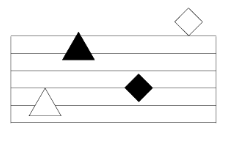
A)
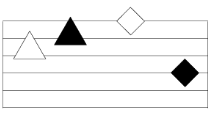
B)
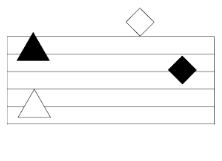
C)
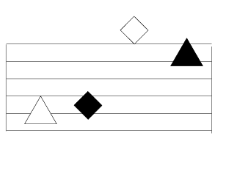
D)
4. Which of the figures below comes next in the sequence?


5. Water is to cup as flowers are to
A) garden
B) roses
C) petals
D)vase
6. Which of the following is the opposite of the word “extensive”?
A) comprehensive
B)symbolic
C) essential
D) restricted
7.

Which of the figures below comes next in the sequence of figures shown above?

A)
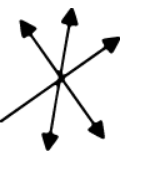
B)
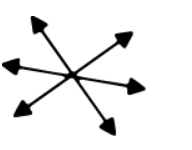
C)
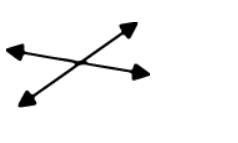
D)
8. What is the next number in the sequence below?
4 11 25 53
A)109
B)105
C)96
D)87
9. You are responsible for mailing 80,000 letters. You must mail 25% of the total letters over the next five days. If you plan to mail 1/5 of this amount each day, what is the total amount that you plan to mail each day?
A)4000
B)2000
C)20000
D)5000
10. 3 × [?] = 6 × 2
A) 2
B) 3
C) 4
D) 5
11. Assumptions:
Customer 1 and Customer 2 each buy products X and Z.
Product Y is never sold to customers who buy product Z.
Conclusion: Product Y is never sold to customers 1 and 2.
If the assumptions are true, is the conclusion
A) Correct
B) Incorrect
C)Cannot be determined based on the information available
12. What is the next number in the sequence below?
3 7 12 18 25
A)31
B)28
C)29
D)33
13. Determine the next number in the series: 2, 3, 5, 8, 13, …
A) 18
B) 19
C) 20
D) 21
14. What is the opposite of lethargic?
A) energetic
B) sluggish
C) languid
D) torpid
15. You have invited 94 people to a meeting. Of those people, 11 from the North cannot attend, 7 from the South cannot attend, 3 from the East cannot attend, and 11 from the West cannot attend. How many people should you expect to attend the meeting?
A)62
B)64
C)59
D)32
16. Which word does not belong?
A)Color
B)Shape
C)Texture
D)Volume
E)Sound
17. Which of the following boxes should replace the question mark(?) to complete the pattern?
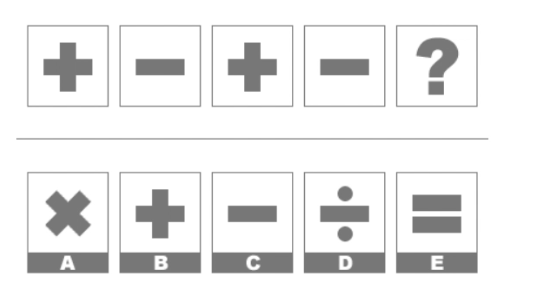
18. Which of the following is the opposite of the word “conclusive”?
A) positive
B) finite
C) ambiguous
D) unusual
19.Tired is to sleep as hungry is to
A)starving
B)eat
C)food
D)cook
20. Which word does not belong?
A) Apple
B) Banana
C) Carrot
D) Orange
E) Mango
For additional practice questions and answers tailored to the PI Cognitive Assessment, we recommend exploring our-
6 Cubiks Logiks General Intermediate Practice Tests
Coupon code – LOGNOV75
If you seek a test simulation closely mirroring the real exam experience, consider visiting our course. Engaging in full-length tests aids in acclimating to time constraints, ultimately improving your score in Logiks General (Intermediate) test
ANSWERS
- Based on the provided assumptions, the conclusion is: A) Correct
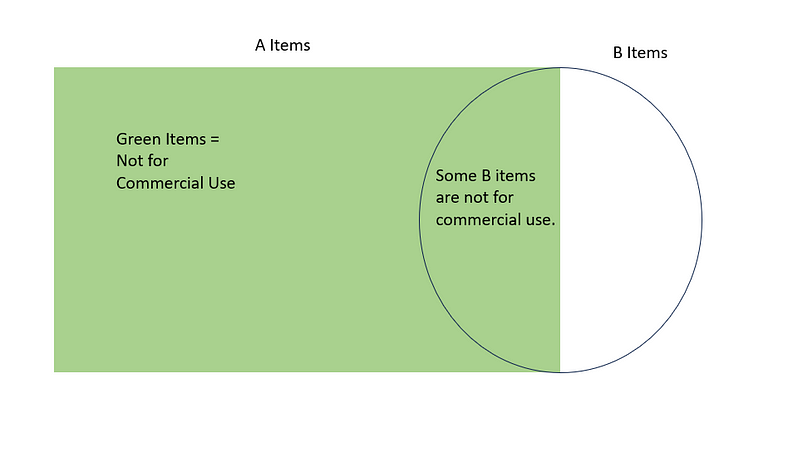
2. Correct Answer is C
12 + 10 = 22
3. Correct Answer B )
There are two rules in this pattern
Rule 1: White elements alternate between having 1 and 0 lines in between them.
So the next figure in the series will have white elements having 0 lines in between them, only B satisfies this
Let’s confirm our answer with Rule 2
Rule 2: Black elements alternate their positions, in the first and third figures black square, is near to white triangle while in Figure 2 white triangle is near to black triangle.
B also satisfies this condition.
A and C satisfy rule 2 but they do not satisfy rule 1.
4. In every alternate step, a triangle and a circle is added surrounding the figure. Following this pattern , next figure in the series C)
5. Correct Answer D)
The relationship between “water” and “cup” suggests containment or a vessel used to hold something. Following this analogy:
Water is contained in a cup.
Applying the same logic to the options:
A) Garden — A garden is a space where flowers grow, but it doesn’t directly relate to containment in the same way a cup does.
B) Roses — Roses are a type of flower, but they don’t represent containment.
C) Petals — Petals are part of a flower, but they don’t represent containment either.
D) Vase — A vase is a container typically used to hold flowers. So, just as water is to a cup, flowers are to a vase.
Therefore, the correct answer is:
D) Vase
6. Correct Answer D)
The opposite of the word “extensive” means something that is not broad but rather limited or narrow in scope. Let’s examine each option:
A) Comprehensive — This means covering or including everything, which is similar to extensive, so it’s not the opposite.
B) Symbolic — This refers to something representing or symbolizing something else, which is unrelated to the concept of extent or scope.
C) Essential — This refers to something necessary or fundamental, which is also unrelated to the concept of extent or scope.
D) Restricted — This means limited or confined, which is the opposite of extensive, making it the correct choice.
Therefore, the correct answer is:
D) Restricted
7. Correct Answer B)
In this sequence, in every alternate iteration, a one-sided arrow is added and in the next iteration the same arrow will have both sides as arrows
8. Correct Answer A)
To identify the next number in the sequence provided, let’s analyze the pattern of the sequence:
4, 11, 25, 53
By examining the differences between consecutive numbers:
11–4 = 7
25–11 = 14
53–25 = 28
We notice that the differences between consecutive terms are increasing by a factor of 2 each time (7, 14, 28).
To find the next difference, we multiply the last difference by 2:
28 * 2 = 56
Now, to find the next number in the sequence, we add this difference to the last number:
53 + 56 = 109
Thus, the next number in the sequence is 109.
Therefore, the correct answer is:
A) 109
9. Correct Answer A)
To find out how many letters you plan to mail each day, let’s break down the process:
Total number of letters to be mailed = 80,000
You plan to mail 25% of the total letters over the next five days. Therefore, the number of letters you plan to mail each day is:
25% of 80,000 = (25/100) * 80,000 = 20,000 letters
Since you plan to mail 1/5 of this amount each day:
1/5 * 20,000 = 4,000 letters
So, the total amount that you plan to mail each day is 4,000 letters.
Therefore, the correct answer is:
A) 4000
10. Correct Answer C)
6 × 2 = 12, so 3 × [?] = 12, [?] = 4
11. Correct Answer A)
Let’s analyze the conclusion based on the given assumptions:
Assumptions:
- Customer 1 and Customer 2 each buy products X and Z.
- Product Y is never sold to customers who buy product Z.
Conclusion:
- Product Y is never sold to customers 1 and 2.
Given that Product Y is never sold to customers who buy Product Z, and both Customer 1 and Customer 2 buy Product Z, the conclusion logically follows that they would not purchase Product Y.
Therefore, the conclusion is:
A) Correct
12. Correct Answer D)
Now, let’s find the next number in the sequence:
Sequence: 3, 7, 12, 18, 25
To find the pattern, let’s look at the differences between consecutive terms:
7–3 = 4
12–7 = 5
18–12 = 6
25–18 = 7
We observe that the differences between consecutive terms are increasing by 1 each time.
To find the next number:
25 + 8 = 33
Therefore, the next number in the sequence is:
D) 33
13. Correct Answer D)
Let’s analyze the given series:
2, 3, 5, 8, 13, …
It seems that each number in the series is obtained by adding the previous two numbers:
2 + 3 = 5
3 + 5 = 8
5 + 8 = 13
So, following this pattern:
8 + 13 = 21
Therefore, the next number in the series is 21.
Hence, the correct answer is D) 21.
14. Correct Answer A)
The word “lethargic” describes someone who is sluggish or lacking in energy.
So, we’re looking for a word that means the opposite, indicating someone full of energy or lively. Option A, “energetic,” fits this description perfectly, as it means having or showing a lot of energy or enthusiasm. Therefore, “energetic” is the opposite of “lethargic.”
Options B, C, and D are all synonymous with “lethargic,” as they all describe someone who lacks energy or is slow-moving. So, the correct answer is A) energetic.
15. Correct Answer A)
To find the number of people who should be expected to attend the meeting, let’s subtract the number of people who cannot attend from the total number of invitees:
Total number of invitees = 94
Number of people who cannot attend:
- From the North: 11
- From the South: 7
- From the East: 3
- From the West: 11
Total number of people who cannot attend = 11 + 7 + 3 + 11 = 32
Now, to find the number of people who should attend the meeting: Total number of invitees — Number of people who cannot attend = 94–32 = 62
Therefore, you should expect 62 people to attend the meeting.
So, the correct answer is:
A) 62
16. Correct Answer is E
All other options are visual elements of art, while “sound” is an auditory element.
17. Correct Answer: B)
The series alternates between ‘+’ and ‘ — ’ . So the next element in the list is ‘+’
18. Correct Answer C)
Opposite of “conclusive”: The word “conclusive” means decisive or serving to settle an issue. Its opposite would be something that is not decisive or clear. Let’s analyze the options:
A) Positive — This is not the opposite of “conclusive.” “Positive” can imply certainty or affirmation, which aligns with the idea of something being conclusive.
B) Finite — This means having limits or bounds, which is not the opposite of “conclusive.”
C) Ambiguous — This means unclear or having more than one interpretation, which is the opposite of “conclusive.”
D) Unusual — This means not common or out of the ordinary, which is not the opposite of “conclusive.”
Therefore, the correct answer is:
C) Ambiguous
19. Correct Answer A)
Analogy: Tired is to sleep as hungry is to: When someone is tired, they typically need to sleep to alleviate their tiredness. Similarly, when someone is hungry, they typically need to do something related to eating to alleviate their hunger. Let’s analyze the options:
A) Starving — This aligns with the level of hunger being described, making it the correct choice.
B) Eat — This is the action taken when someone is hungry, but it’s not directly analogous to “sleep” in the given analogy.
C) Food — This is what someone who is hungry desires, but it’s not the action they would take analogous to “sleep” in the given analogy.
D) Cook — This is an action related to preparing food, but it’s not directly analogous to “sleep” in the given analogy.
Therefore, the correct answer is:
A) Starving
20. Correct Option C)
All other options are fruits, while a carrot is a vegetable.
